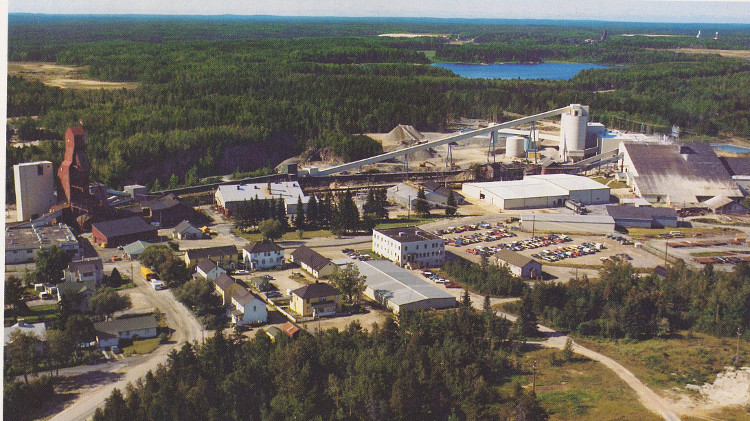In the last decade, there has been a growing demand for transparency with respect to tailings storage facilities (TSF) as well as a need for a means for comparative evaluation of TSF at different sites and among different owners. However, tailings management systems and their risks are very complex, often misunderstood, frequently miscommunicated and sometimes mismanaged as a result. In fact, senior management, mining operators and other stakeholders who are not involved in TSF management often do not have the technical background to appreciate the complexity of TSF risks.
TSF come in a variety of sizes, types and designs – each as unique as the sites on which they lie. As such, understanding, evaluating, comparing and communicating the risks of TSF infrastructure and systems do not come easy. Complicating matters further, there are a wide variety of strategies to do so within the technical tailings design community.
To help address these challenges, I joined a team of experienced engineers to develop an evaluation process that could be consistently applied to any type of TSF. The process includes a semi-empirical method to estimate an annual probability of failure that is then combined with a quantitative evaluation of the consequences of failure to produce an objective and detailed assessment of the risk.
Risk is based on both probability of failure (POF) and consequence of failure, and this is perhaps the most widely miscommunicated and misunderstood aspect of tailings management. For example, the very informative Global Tailings Portal contains information on over 1,800 TSF, including their owners, locations, heights, volumes, construction types and potential consequence of failure ratings. Key focus areas on the portal are the type of construction and the associated consequence ratings. However, nowhere in this compilation is there information about the POF. It is left to the user to interpret the data, where many will view the list of “extreme or high-consequence” facilities as high risk and could result in owners being viewed as irresponsible for imposing high risks on downstream stakeholders. In fact, through comprehensive design and strong governance and management systems, many of these facilities could have a very low POF making them low to medium risk overall.
The evaluation tool targets the basis of risk mitigation and first addresses how well the system is understood, and the quality of investigations, testing and analyses performed to gain that understanding. It includes consideration of the site climate, surface hydrology, subsurface hydrogeological and geological conditions, as well as all the materials used in construction and those contained in the TSF. Next the design elements are reviewed, considering the scope of the system (i.e., foundation conditions, embankment, tailings deposition, water management) and the rigour and appropriateness of the design and analyses completed, including stability, water balance and climate change considerations, as well as the level of expert review. Quality and management of construction, controls and oversight, and the extent to which the infrastructure was built according to design, and then the quality of the operational, monitoring, management and governance systems are also reviewed along with the actual performance of the facility.
Related: Technological advances are allowing geotechnical engineers to develop a complete understanding of their tailings storage facilities at a time when it is more important than ever
In total, 45 criteria are rated and scored according to level of practice and are tallied with a final rating of high, good, average or poor. Based on semi-empirical relationships previously derived by others, the level of practice and factor of safety is utilized to determine an annual probability of failure value and rating. Taking this rating and cross referencing it with the consequences of failure rating (determined separately), the risk rating is determined.
The outcome of the evaluation is three-fold:
1. The owners and TSF management team develop an appreciation of the robustness of the TSF (in terms of design, construction and operation), the level of uncertainty and where improvements can be made to reduce the probability of failure, and therefore risk.
2. The owners gain an understanding of the level of risk associated with their facilities and specific infrastructure. Because the analyses are based on a consistent methodology, it can be used to comparatively evaluate the TSF portfolio and then prioritize and target specific areas of uncertainty or deficiency across the portfolio.
3. The outputs provide visual snapshots (see figure, opposite page) of the portfolio of risk associated with a TSF portfolio, in a way that is comparable to other enterprise risks, to help with communications to non-tailings practitioners.
Evaluation and communication of tailings management risks is not an easy task. It is a topic of great debate and concern within the tailings design and management professional network. The new evaluation tool is a proposed solution to help alleviate this challenge by improving internal communication and documentation of the risks of critical infrastructure and facilitating transparent risk-based decision-making. Moreover, the tool allows detailed actions to be taken in the pursuit of reducing risks associated with tailings storage facilities.
For anyone interested in reading more, see “Risk Assessment for Tailings Management” published in the CIM Journal, Vol 12, No. 1.
TSF Risk Primer
For people who are not involved in the details of design and management of TSF, here are a few relevant phrases and points to facilitate better understanding of typical risk communications:
The Factor of Safety (FS) is often used as an indicator of TSF stability, and regulators often specify that a facility meet minimum FS values. The FS for different scenarios is determined through a series of stability analyses, the results of which are heavily dependent on the assumed material characteristics and geometry of the foundation soils, the embankment and the contained tailings. The analyses also assume distributions of stresses and pressures within the TSF based on the height of tailings and the water level within the TSF at various points in time. In other words, the actual FS will vary slightly over time with changing conditions in the field as the TSF are raised, tailings deposited, water levels vary, and consolidation.
For a particular FS, the probability of failure (POF) can range several orders of magnitude, depending on how well the actual field conditions and material characteristics correspond to the assumptions of the stability analyses. Field conditions and material characteristics are often heterogenous as opposed to the homogeneous conditions assumed in stability analysis and design. As such, uncertainties or discrepancies can accumulate quickly. Sources of uncertainty and discrepancy include insufficient site investigation and material testing, variable foundation conditions, variations in the materials used for construction, non-uniform construction techniques, etc. The list is long. This fact is well understood by practitioners of TSF design and is the reason that technical review should be incorporated into design, comprehensive quality assurance and that quality control should be incorporated into construction, and that adequate instrumentation and monitoring should be incorporated into operation.
The consequences of failure are not considered in the determination of the FS or POF. They are determined under the assumption that a TSF fails and releases some percentage of the contained tailings and water, regardless of its FS or POF. Consequences are evaluated on several aspects, typically including, and not limited to, potential injury or loss of life, environmental damage, relations with local stakeholders, reputation and social licence to operate, as well as the financial impact.
The risk rating of a TSF is the product of the probability of failure and the consequence of failure. The product of the two aspects automatically combines infrastructure-specific elements (i.e., POF based on the FS and level of uncertainty associated with the TSF) and system-based elements (i.e., water management and downstream consequences). – Karen Chovan
Karen Chovan is the Founder of Enviro Integration Strategies Inc., focused on creating value and reducing risks in the mining sector. Website: https://www.envirointegration.com




